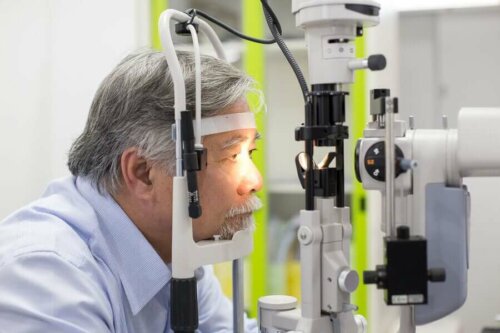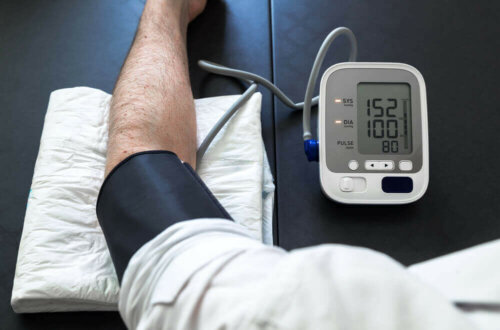How Can Pressed Garlic Help Restore Vision Loss


Reviewed and approved by the physiotherapist Sofía Quintana Alonso
Diet and lifestyle habits have a decisive influence on your eye health and vision loss, according to data from the American Academy of Ophthalmology. Your eyes need essential fatty acids, vitamins, and antioxidants to function properly and prevent deterioration. But how does garlic consumption specifically affect the eyes?
The truth is that eating foods high in Omega 3 fatty acids, lutein, zeaxanthin, zinc, and vitamins C and E would reduce the risk of macular degeneration and other eye diseases, such as cataracts.
Below, we’ll tell you all about macular degeneration and how regular garlic intake could influence your eyes. Grab a pen and paper, and get ready to take notes.
What is macular degeneration?

The Archivo Médico de Camagüey magazine points out that macular degeneration (AMD) is a visual disease characterized by the slow deterioration of your central and sharp vision. It makes it difficult to see fine details or read. It’s more common in individuals over 60 years old, although there have also been cases in younger people.
For its part, the National Library of Medicine of the United States explains that this disease affects the part of the eye that allows us to observe details, that is, the macula.
However, the disease can, on the one hand, generate the growth of abnormal blood vessels that leak blood and be evidenced by blurred vision (wet AMD) and, on the other hand, deteriorate the light-sensitive macular cells (dry AMD). In the latter case, one of the main symptoms is seeing straight lines askew.
Generally, more than 80% of cases suffer from dry age-related macular degeneration. This disease appears in the face of thinning of the macula and subsequent agglomeration of drusen (proteins).
Read also: Five Reasons Why You Might Have High Blood Pressure
How can garlic help with vision loss?
According to data from the U.S. Department of Agriculture, garlic contains lutein, zeaxanthin, zinc, and vitamins C and E, all substances that could help prevent macular degeneration.
An article in Food Science and Biotechnology concluded that garlic has antioxidant and antibacterial properties, while research in Anti-Cancer Agents in Medicine Chemistry found that it also has an anti-inflammatory effect.
Thus, it’s believed that the combination of these properties can prevent oxidative damage caused by free radicals and protect eye cells, preventing damage to the macula.
On the other hand, garlic is considered one of the best foods for controlling hypertension and high blood cholesterol, two conditions closely related to eye damage and vision loss.
Blood pressure and its relationship with your vision

Patients who have high blood pressure are more likely to have vision loss/problems than those who don’t. This is because excess pressure reduces the circulation of oxygenated blood to the retina.
This part of your eye depends on oxygen levels for good performance. Therefore, a restricted blood flow compromises your visual health. Garlic promotes proper blood flow and reduces your systolic blood pressure to stable levels.
Cholesterol and eye health
Too much cholesterol in your bloodstream not only triggers unhealthy reactions at the cardiovascular level but also has to do with the buildup of fatty deposits behind the retina.
These lipids can decrease your vision and over the long-term, lead to vision loss. Garlic contains sulfur and powerful antioxidants that prevent the synthesis of both bad and total cholesterol.
Read also: Four Natural Ways to Stimulate Blood Flow in Your Body
Prepare garlic to care for your vision
You’ll need a kitchen utensil known as a garlic press. It’s designed to crush a clove of garlic by pressing it through a series of small holes. It has a small lever that serves to press the clove into a thick paste. Of course, if you don’t have this tool you can choose other options like a cutting board or a mortar and pestle.
How to consume it
- To obtain these benefits from daily garlic consumption, we recommend one or two cloves
- You should always eat it raw. This is because when you cook garlic, it loses up to 90% of its benefits.
- You can also combine it with a little bit of lemon juice and olive oil

Does garlic help vision loss?
While possible benefits of garlic consumption have been noted throughout this article, it should be noted that there’s no reliable data in regard to its efficacy in the prevention of macular degeneration and other visual diseases.
In case of symptoms of vision loss, we recommend visiting an ophthalmologist for a timely diagnosis and treatment. Remember that consuming garlic in no way exempts you from following your doctor’s instructions.
All cited sources were thoroughly reviewed by our team to ensure their quality, reliability, currency, and validity. The bibliography of this article was considered reliable and of academic or scientific accuracy.
- García-Montalvo, I.A., and Matías-Pérez, D. (2015). Componentes nutricionales y degeneración macular relacionada con la edad. Nutricion Hospitalaria 32, 50–54.
- Gómez, L.J.G., and Sánchez-Muniz, F.J. (2000). Revisión: Efectos cardiovasculares del ajo (Allium sativum). Archivos Latinoamericanos de Nutricion 50, 219–229.
- Ramírez, H.R., Castro, L.N., and Martínez, E. (2016). Efectos Terapéuticos del Ajo (Allium Sativum). Salud y Administración 3, 39–47.
- American Academy of Ophthalmology. Dieta y nutrición. https://www.aao.org/salud-ocular/consejos/dieta-nutricion
- Revista Archivo Médico de Camagüey, versión On-line ISSN 1025-0255. AMC v.12 n.2 Camagüey mar.-abr. 2008. Degeneración macular relacionada con la edad. http://scielo.sld.cu/scielo.php?script=sci_arttext&pid=S1025-02552008000200016
- MedlinePlus. Degeneración Macular. https://medlineplus.gov/spanish/maculardegeneration.html
- USDA. Garlic. https://fdc.nal.usda.gov/fdc-app.html#/food-details/169230/nutrients
- Food Sci Biotechnol. 2018 Feb; 27(1): 219–225. Published online 2017 Dec 12. Antioxidant and antimicrobial activities of fresh garlic and aged garlic by-products extracted with different solvents. doi: 10.1007/s10068-017-0246-4
- Anales de medicina interna. Ajo y riesgo cardiovascular. http://scielo.isciii.es/pdf/ami/v25n5/revision1.pdf
- El Sevier. Vol. 29. Núm. 3. Páginas 96-105 (Julio – Septiembre 2012). Ocular manifestations of hypertension. https://www.elsevier.es/es-revista-hipertension-riesgo-vascular-67-articulo-ocular-manifestations-hypertension-S1889183712000475
- International Journal of Epidemiology. (2017). HDL-cholesterol levels and risk of age-related macular degeneration: a multiethnic genetic study using Mendelian randomization.https://academic.oup.com/ije/article/46/6/1891/4157381
- L Jacinto Garcia Gomez; Francisco Sanchez Muniz. Revision: efectos cardiovasculares del ajo (allium sativum). https://www.worldcat.org/title/revision-efectos-cardiovasculares-del-ajo-allium-sativum/oclc/71154589
- Prog Retin Eye Res. Author manuscript; available in PMC 2015 Jul 1. Published in final edited form as: Prog Retin Eye Res. 2014 Jul; 0: 64–89. Published online 2014 Apr 4. Cholesterol in the retina: the best is yet to come. doi: 10.1016/j.preteyeres.2014.03.002
This text is provided for informational purposes only and does not replace consultation with a professional. If in doubt, consult your specialist.








